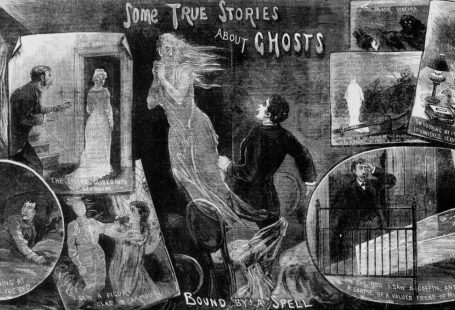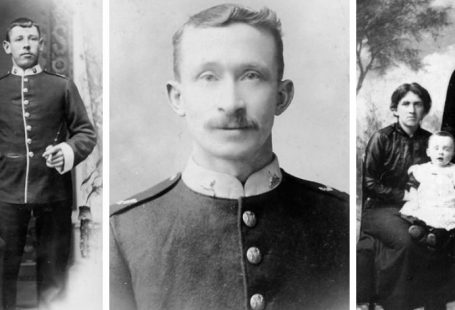Historically poachers have often been ascribed ‘a good deal of romance’ – but are they deserving of such a description? In this special blog post, using articles and illustrations from the British Newspaper Archive, we will investigate this notion, as well as looking at the crueler side of this antiquated countryside pursuit.
Illustrated Sporting & Dramatic News | 31 October 1908
An article in a July 1917 edition of the Illustrated Sporting & Dramatic News does much to propagate this romanticised view of poaching. The writer concentrates on his Norfolk childhood, ‘where everybody fish-poached, from the squire to the poorest labourer and his family, and from the parson and his sons and daughters to the most saintly of his very regular congregation.’
The unnamed author describes angling ‘in the gloaming of the summer’s evening.’ And ‘when the moon is particularly bright he may gad for eels and drag a net.’
Illustrated Sporting & Dramatic News | 28 July 1917
Indeed, the whole pursuit seems to have much of the glamour and adventure of other illicit activities, such as smuggling. Not only is poaching presented here as something rather romantic – it can be the source of much humour.
One type of fish poaching was known as ‘stanking,’ where a deep hole was dug in the river bed, thus disconnecting it from the rest of the river. The water was then pumped out, and the fish collected from within. Naturally this was rather messy work, and poachers would have to change out of their clothes. This resulted in a tale of much hilarity, where a bailiff came upon a group of poachers who had so disrobed.
He appeared so suddenly that it might have been imagined he had dropped from the clouds, and, pouncing on our clothes, which were lying in a heap on the bank, made off with them as fast as he could run…it was far from pleasant plodding home across ploughed fields and ditches, and through woods and hedges, clad in old sacks found in a barn near the river, and jack-boots soaked with water…The bailiff revels in telling it, and how he subsequently sold the clothes for thirty shillings, and got drunk with a part of the money.
Poacher’s Strategem | Illustrated Sporting & Dramatic News | 16 August 1913
Why the concept of poaching is so appealing and enduringly romantic surely must lie in how it represents a rebellion against the aristocratic authority of the few who owned the land upon which poachers operated. The bailiff in the above story assumes the part of the villain, and the poachers the honest, aggrieved, party. Furthermore, as an article entitled The Poacher’s Progress in a September 1905 edition of The Sketch suggests, it was an important social leveler.
Poaching enabled the poor to buy necessary food at a cheaper cost: ‘When the game has been stolen the reward is small. Birds cannot be sold in open market, and must be disposed of for very little to a class that is content to buy cheaply and to ask no questions.’
The Sketch gives further example of a ‘country-woman with a large family to feed [who] will give a shilling for a couple of rabbits that have not been shot.’
Illustrated Sporting & Dramatic News | 31 October 1908
But the downside to poaching, and especially when coupled with our modern sensibilities, is the cruelty inflicted upon the wildlife that were being pursued. The poacher, by necessity, had to go undetected, and so would often resort to unusual methods of snaring their prey, rather than using the relatively swift dispatch of a gun. The report of a gun would be sure to alert the gamekeeper or bailiff. The Sketch, at length, discusses such methods, such as firing sulphur and brown paper under a branch, which would cause the birds to fall down the ground, stupefied.
Poachers may have indeed been ‘the modern Calibans of the countryside,’ snaring their prey at all costs. But arguably poaching was a reaction to a medieval system where most of the countryside was controlled by the few, and grew out of a need for the poor to eat, to survive even.
Illustrated Sporting & Dramatic News | 28 July 1917
There are many sides of the poaching story to be found in the British Newspaper Archive – from advertisements showing off the latest in anti-poaching equipment, to contemporary criticisms of poaching activity. One of the more charming tales to be found on the subject is this one on the Poacher’s Dog, in an October 1908 copy of the Illustrated Sporting & Dramatic News, recounting events of one night in 1818:
Not long ago, as the gamekeepers at Castle Howard, the seat of the Earl of Carlisle, were on their nightly perambulations, they observed a light traversing in a field in a very singular manner, and apparently moving of itself. They looked at it with astonishment and some dismay, and prepared their guys accordingly. In a short time the light made a sudden stop, when three or four men, whom they had not descried, appeared, and began drawing a large net up to the light, which proved to be a setter, with a lantern fixed upon his head, so that he could range the field, and on his stopping, the poachers knew where the partridges lay and drew the next up to him.











